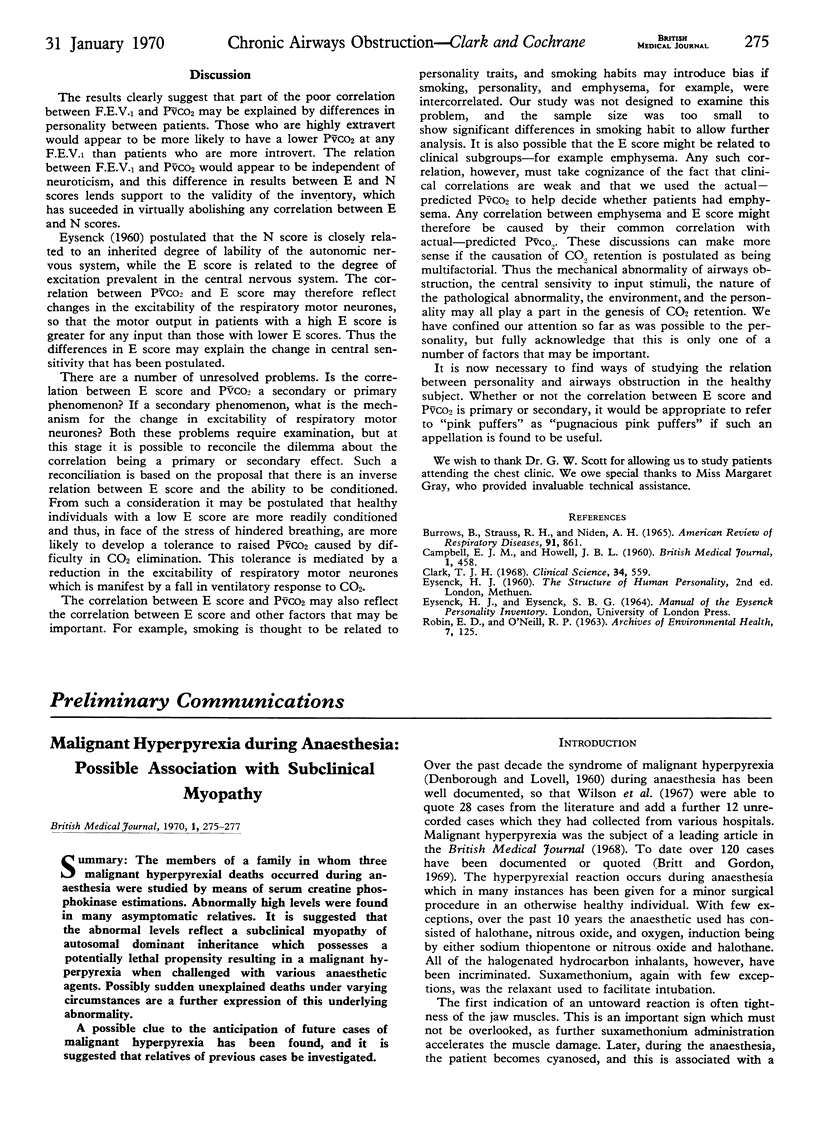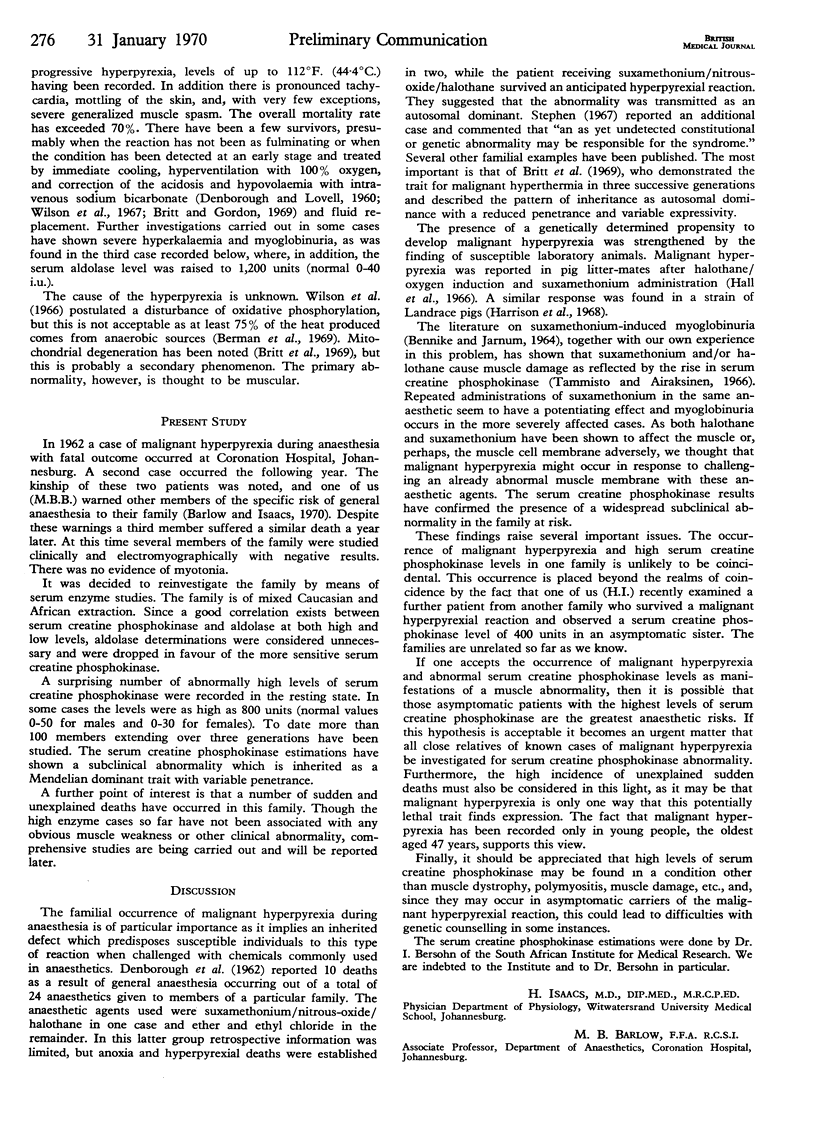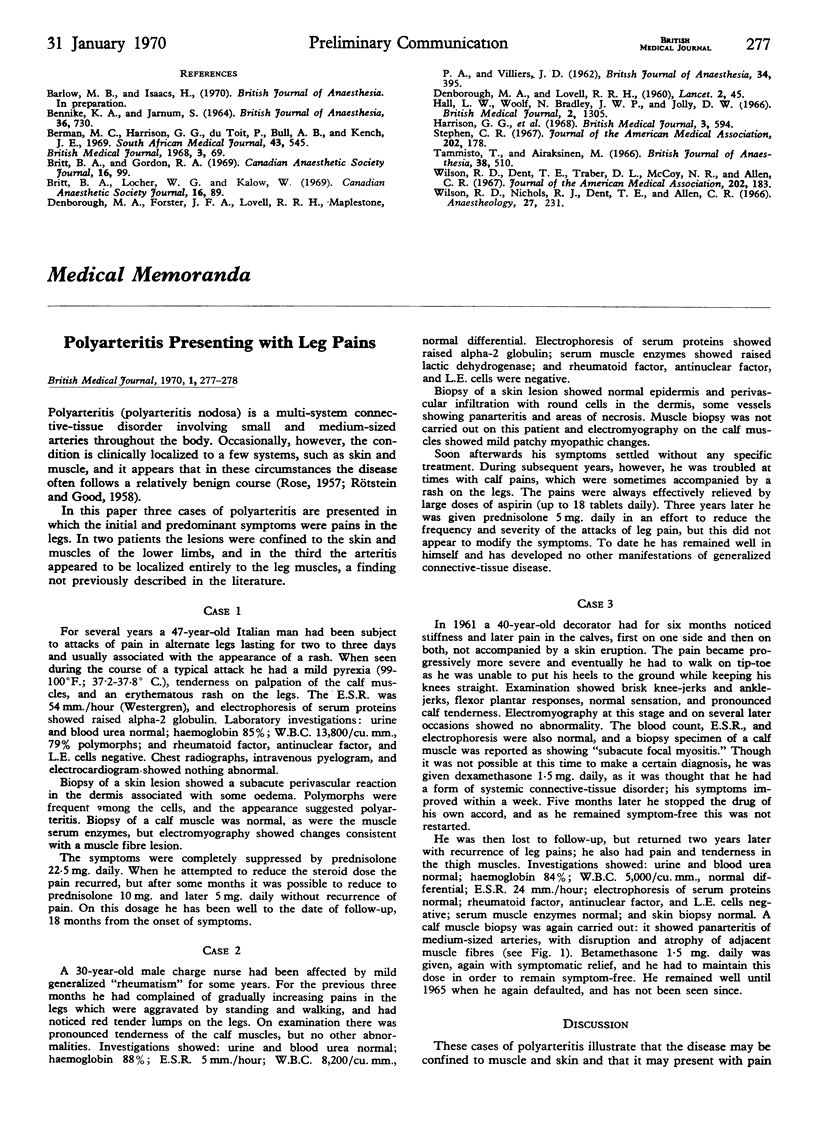Abstract
The members of a family in whom three malignant hyperpyrexial deaths occurred during anaesthesia were studied by means of serum creatine phosphokinase estimations. Abnormally high levels were found in many asymptomatic relatives. It is suggested that the abnormal levels reflect a subclinical myopathy of autosomal dominant inheritance which possesses a potentially lethal propensity resulting in a malignant hyperpyrexia when challenged with various anaesthetic agents. Possibly sudden unexplained deaths under varying circumstances are a further expression of this underlying abnormality.
A possible clue to the anticipation of future cases of malignant hyperpyrexia has been found, and it is suggested that relatives of previous cases be investigated.
Full text
PDF


Selected References
These references are in PubMed. This may not be the complete list of references from this article.
- BENNIKE K. A., JARNUM S. MYOGLOBINURIA WITH ACUTE RENAL FAILURE POSSIBLY INDUCED BY SUXAMETHONIUM. A CASE REPORT. Br J Anaesth. 1964 Nov;36:730–736. doi: 10.1093/bja/36.11.730. [DOI] [PubMed] [Google Scholar]
- Britt B. A., Gordon R. A. Three cases of malignant hyperthermia with special consideration of management. Can Anaesth Soc J. 1969 Mar;16(2):99–105. doi: 10.1007/BF03005789. [DOI] [PubMed] [Google Scholar]
- Britt B. A., Locher W. G., Kalow W. Hereditary aspects of malignant hyperthermia. Can Anaesth Soc J. 1969 Mar;16(2):89–98. doi: 10.1007/BF03005788. [DOI] [PubMed] [Google Scholar]
- DENBOROUGH M. A., FORSTER J. F., LOVELL R. R., MAPLESTONE P. A., VILLIERS J. D. Anaesthetic deaths in a family. Br J Anaesth. 1962 Jun;34:395–396. doi: 10.1093/bja/34.6.395. [DOI] [PubMed] [Google Scholar]
- Hall L. W., Woolf N., Bradley J. W., Jolly D. W. Unusual reaction to suxamethonium chloride. Br Med J. 1966 Nov 26;2(5525):1305–1305. doi: 10.1136/bmj.2.5525.1305. [DOI] [PMC free article] [PubMed] [Google Scholar]
- Stephen C. R. Fulminant hyperthermia during anesthesia and surgery. JAMA. 1967 Oct 16;202(3):178–182. [PubMed] [Google Scholar]
- Tammisto T., Airaksinen M. Increase of creatine kinase activity in serum as sign of muscular injury caused by intermittently administred suxamethonium during halothane anaesthesia. Br J Anaesth. 1966 Jul;38(7):510–515. doi: 10.1093/bja/38.7.510. [DOI] [PubMed] [Google Scholar]
- Wilson R. D., Dent T. E., Traber D. L., McCoy N. R., Allen C. R. Malignant hyperpyrexia with anesthesia. JAMA. 1967 Oct 16;202(3):183–186. [PubMed] [Google Scholar]


